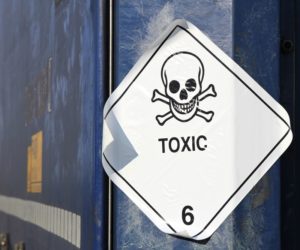Top 5 Deadly Household Poisons

Did you know there are easily available poisons in homes around the U.S.? Learn more about these deadly household poisons.
Did you know that you use deadly poisons in your home everyday and don’t even realize it? These poisons can cause damage to the brain and body and even cause coma and death. Small children and adolescents, of course, are a major concern when it comes to accessing household poisons and we should safeguard against easily available poisons in the home. Many of the products we use contain deadly substances that we touch or breathe in. To be on the safe side, we should familiarize our self with the top deadly household poisons and try to eliminate as many as we can from our home. And, if we suspect our teenager of using any household poison to get high, we should sit down with him or her and talk about the dangerous consequences.
Inhalants
Inhalants are a popular choice among adolescents for getting high. They are often cheap and easy to come by, especially if they are right in the household. Some of the many inhalant street names include: boppers, huff, air blast, laughing gas, bolt, bullet, hippie crack, oz, poppers, thrust, whippets, snappers, whiteout and Texas shoe shine. The household inhalants list consists of:
- Gases – such as those found in whipped cream cans, cigarette lighters, propane tanks and refrigerants.
- Aerosols – aerosol sprays contain toxic solvents and propellants that are found in spray paint cans, hair sprays, cooking oil sprays, fabric protectants and spray deodorants.
- Volatile solvents – are liquids that throw off vapors that we can inhale. They are ubiquitous common household and industrial products such as: glue, paint thinners, felt-tip markers, cleaning fluids, degreasers and typewriter correction fluids.
- Nitrites – are substances we inhale that directly affect the central nervous system. Some items that contain nitrites are: leather cleaners, room odorizers, liquid aromas and video head cleaners.
Recreational use of inhalants is mostly done by sniffing the product which produces a short-term high. Consistent sniffing for several hours is often done by the user to maintain the high. These easily available poisons in the home can cause: euphoria, slurred speech, delusions, dizziness, hallucinations, and impaired coordination. Nitrate inhalants cause blood vessels to dilate and relax, and this action enhances sexual pleasure. If the user is breathing-in a concentrated amount of the inhalant they can experience sudden heart failure within minutes, and this is known as “sudden sniffing death”.
Air Fresheners
These release an agent that deadens the nerves and reduces your ability to smell. Some of the known toxic chemicals that are found in air fresheners consist of:
- Formaldehyde – a known carcinogen
- Phenol – can cause the skin to swell, peel, burn or produce hives. Phenol can also cause convulsions, circulatory collapse, cold sweats, coma and death.
Dishwashing detergents
This is the number one substance that causes child poisoning in the U.S. Dishwashing detergents often contain high concentrated amounts of chlorine.
Carpet and upholstery shampoos
These shampoos usually contain Perchloroethylene, a known carcinogen that causes liver, kidney and nervous system damage. Another substance found in these shampoos is Ammonium Hydroxide which is extremely irritable to the skin, eyes, and respiratory passageways.
Furniture Polish
Common furniture polishes may contain:
- Phenol that can cause convulsions, circulatory collapse, cold sweats, coma and death.
- Petroleum distillates are dangerous, highly flammable substances that can cause skin and lung cancer.
- Nitrobenzene is highly toxic and is easily absorbed through the skin. It can cause shallow breathing, vomiting, genetic changes, cancer, birth defects and death. It can also damage the heart, liver, kidneys, and central nervous system. Once it is on your furniture it will continue to emit dangerous fumes.
These are some of the top deadly household poisons that we use daily. We should be mindful of the products we buy by reading the labels and researching what we don’t understand, especially if there are small children and adolescents in the home. Adolescents are known to abuse inhalants, and if you suspect your child of abusing inhalants, you should check for signs of inhalants abuse such as:
- Being disoriented, a lack of coordination
- Choking, suffocation
- Chemical smells on the person
- Hidden chemical-soaked rags or empty spray bottles
- Slurred speech
- Seizures
- Stains on the hands or face
- Unconsciousness
- Coma and death
If your child is abusing inhalants or other dangerous poisons, you should have him treated as an inpatient at any of our best Rehabs in Florida. He will need the professional help of medical experts to safely be weaned off of these dangerous substances. Your child should also receive psychological and behavioral counseling; and family counseling will help you assist him toward a sober future.
If you or a loved one needs help with abuse and/or treatment, please call the WhiteSands Treatment at (877) 855-3470. Our addiction specialists can assess your recovery needs and help you get the addiction treatment that provides the best chance for your long-term recovery.
